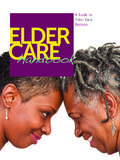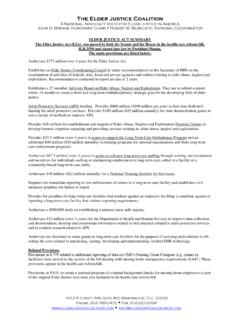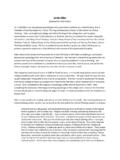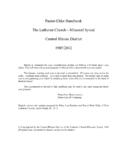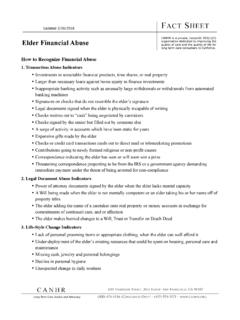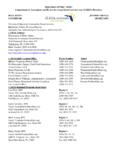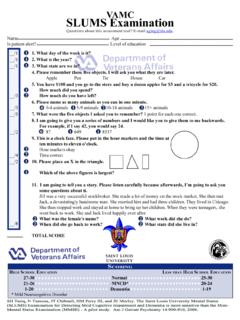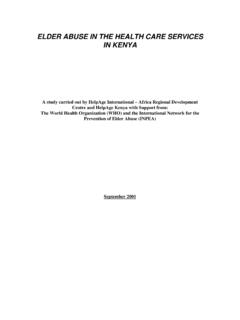Transcription of ELDER ABUSE IN INDIA - WHO
1 ELDER ABUSE IN INDIA Country Report for world health OrganizationShubha SonejaHelpAge IndiaC-14, Qutab Institutional AreaNew Delhi - 110016 Acknowledgements:Anupama Datta, Research Associate, HelpAge IndiaThe participants of the focus groupsDedicated to:The abused elderlyContentsBackgroundMethodologyFind ingsMain problems as faced by elderly men and womenOlder Peoples roles within their communitiesPerception of what ELDER ABUSE is and what are the different kindsPerceptions of the contexts in which ELDER ABUSE occurs, and itsperceived causesSituations where different acts of violence and/or ABUSE are acceptableor unacceptableSituations where it is appropriate for family members.
2 Neighbours orfriend to interveneWhether ABUSE in common in the area or notSeasonal influences of abusePerceptions of ELDER ABUSE as a health issue and an issue of concernfor health care workersIdentify existing/needed health and social services and communitysupport in relation to violence and abuseDefine the gaps, the needs and views for future responses to ABUSE ,care and people do not approach helpDiscussionConclusionElder ABUSE in IndiaBackground: INDIA is growing old! The stark reality of the ageing scenario in INDIA is thatthere are 77 million older persons in INDIA today, and the number is growing togrow to 177 million in another 25 years.
3 With life expectancy having increasedfrom 40 years in 1951 to 64 years today, a person today has 20 years more tolive than he would have 50 years , this is not without problems. With this kind of an ageing scenario,there is pressure on all aspects of care for the older persons be it financial, health or shelter. As the twenty first century arrives, the growing security ofolder persons in INDIA is very visible. With more older people living longer, thehouseholds are getting smaller and congested, causing stress in joint andextended families.
4 Even where they are co residing marginalization, isolationand insecurity is felt among the older persons due to the generation gap andchange in lifestyles. Increase in lifespan also results in chronic functionaldisabilities creating a need for assistance required by the older person tomanage chores as simple as the activities of daily living. With the traditionalsystem of the lady of the house looking after the older family members athome is slowly getting changed as the women at home are also participatingin activities outside home and have their own career ambitions.
5 There isgrowing realisation among older persons that they are more often than notbeing perceived by their children as a Age has never been a problem for INDIA where a value based, joint familysystem is supposed to prevail. Indian culture is automatically respectful andsupportive of elders. With that background, ELDER ABUSE has never beenconsidered as a problem in INDIA and has always been thought of as awestern problem. However, the coping capacities of the younger and olderfamily members are now being challenged and more often than not there isunwanted behaviour by the younger family members, which is experienced asabnormal by the older family member but cannot however be aim of the study was to (1) define and identify the symptoms of elderabuse, (2) create awareness about its existence to the primary health careworkers and (3) develop a strategy for its.
6 Focus group discussions were held to gather data from the participants of thestudy. This is a technique widely used to gather data especially on sensitiveissues wherein the subjects involved in the study cannot or for some reasonreserve their comments and one to one interviews do not seem to within a group helps the participants to be able to define a problemwithout making an effort to measure its :The sample was taken from urban society, residing in Delhi. Two majorgroups were addressed: the older persons and the primary health careworkers who interact with these persons when they approach as Persons:Six focus groups were convened with the help of the author and an assistantfacilitator in six different areas in Delhi.
7 These groups comprised of membersof senior citizens associations in local of residential areas of Delhi. The detailsof the groups are given as under:Group numberConstitutionNo. ofparticipantsSocio-economicstatus 1 Male10 Middle2 Male08 Upper middle3 Mixed12 Low4 Mixed10 Upper Middle5 Female08 Low6 Female10 HighThe socio economic status was examined from the last income, occupationand education of the participants of the care workers:Two groups of health care workers involved as primary health care workers inurban settings were also involved in focus group discussions regarding theirperceptions of what ELDER ABUSE is, how rampant it is within the Indian contextand how they feel that it can be tackled.
8 Both the groups constituted of maleand female doctors, female nurse and nursing attendents (both male as wellas females).Registration clerks were also included in the groups as they arethe first contact of a patient in a health care setting. Total number ofparticipants in both these groups was :During the introduction, in the focus groups with the older persons, care wastaken about avoiding the word ABUSE .Main problems as faced by elderly men and womenMALESD iscussions with male groups indicated that the middle income group listed economic problems on priority.
9 The second male group from the uppermiddle class prioritised mental health problems focusing more on lack ofwork, lack of facilities for utilisation of leisure time and a general feeling ofloneliness talking to walls . The problem here did not seem to be lack ofmoney but lack of time by the others for the older personsSecond to economic problem came lack of emotional support from familymembers and both the groups felt that they felt a need to talk to their familywho did not seem to have time for them The Words were many ranging from neglect from family, experience of loneliness in everything , a sense ofinsecurity and feeling of burden.
10 And Old Age itself was a disease A glaring problem faced by the males group was older couple being asked tolive separately when they had more than one child the older woman tostay with one child and the man to stay with another according to theconvenience of their support in whatever housework /outside work they couldcontribute toHealth problems however took a back seat coming in at the third position andlinked with lack of mobility and economic problemsLack of accommodation was also a problem identified by the older personswho had houses of their own and were not staying in apartments, where thereis only a specified study 1Dr.










